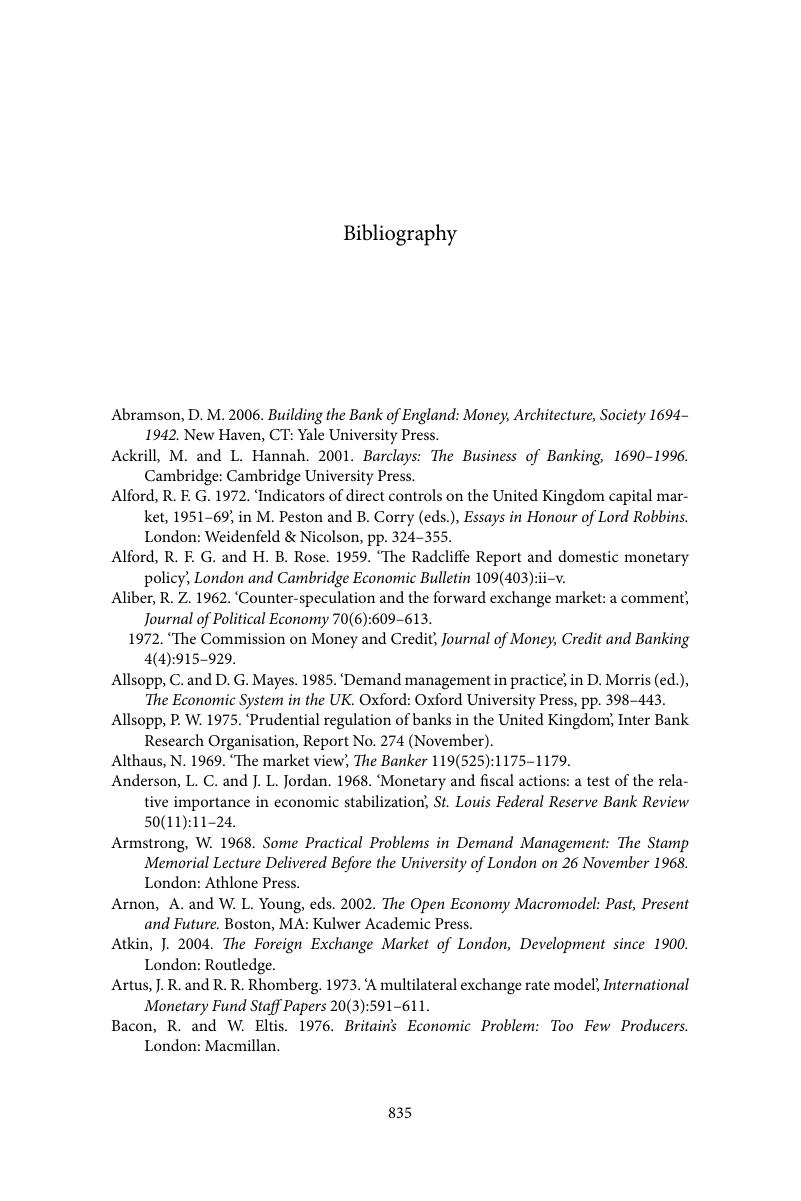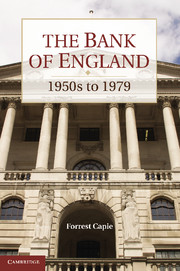Book contents
- Frontmatter
- Contents
- List of Illustrations
- List of Figures
- List of Tables
- Foreword by Mervyn King
- Preface
- Acknowledgements
- Abbreviations and Acronyms
- 1 Introduction and Overview
- 2 The Bank in the 1950s
- 3 The Monetary Setting and the Bank
- 4 The Bank's External Responsibilities to 1964
- 5 From Crisis to ‘Crucifixion’
- 6 Domestic Monetary Policy after Radcliffe
- 7 Other Activities and Performance
- 8 Sterling from Devaluation to Smithsonian
- 9 The Road to Competition and Credit Control
- 10 Competition and Credit Control
- 11 The Secondary Banking Crisis
- 12 Banking Supervision
- 13 Monetary Targets and Monetary Control
- 14 The Bank and Sterling in the 1970s
- 15 The Bank's Freedom to Operate
- 16 Epilogue
- Bibliography
- Index
- Titles in the series
- References
Bibliography
Published online by Cambridge University Press: 05 July 2011
- Frontmatter
- Contents
- List of Illustrations
- List of Figures
- List of Tables
- Foreword by Mervyn King
- Preface
- Acknowledgements
- Abbreviations and Acronyms
- 1 Introduction and Overview
- 2 The Bank in the 1950s
- 3 The Monetary Setting and the Bank
- 4 The Bank's External Responsibilities to 1964
- 5 From Crisis to ‘Crucifixion’
- 6 Domestic Monetary Policy after Radcliffe
- 7 Other Activities and Performance
- 8 Sterling from Devaluation to Smithsonian
- 9 The Road to Competition and Credit Control
- 10 Competition and Credit Control
- 11 The Secondary Banking Crisis
- 12 Banking Supervision
- 13 Monetary Targets and Monetary Control
- 14 The Bank and Sterling in the 1970s
- 15 The Bank's Freedom to Operate
- 16 Epilogue
- Bibliography
- Index
- Titles in the series
- References
Summary

- Type
- Chapter
- Information
- The Bank of England1950s to 1979, pp. 835 - 852Publisher: Cambridge University PressPrint publication year: 2010



